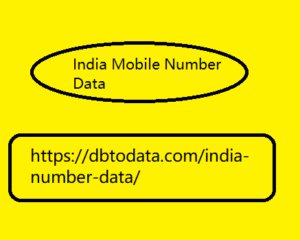Post by account_disabled on Mar 11, 2024 4:36:12 GMT 1
The term analytics refers to all those software that collect and display information on certain phenomena: accesses to a website, interactions with a page on social media, the functioning of a machine and so on. In modern marketing they have become indispensable for understanding what is happening and what effects the actions taken have had. Over the years, these analysis software have undergone an evolution due to the availability of much more data than in the past (in some cases real Big Data) and the improvement of value extraction techniques (Artificial Intelligence in its various forms).
This is how data analysis systems can be classified. Descriptive India Mobile Number Data Analytics Analytics tools are said to be descriptive when they shed light on the past and, if they are of the "real time" type, also on what is happening at the moment in which the phenomenon is taking place. They allow you to compare different moments in the past and identify the activities that brought benefits and those that did not. The idea is that by understanding the past and present, it is possible to better plan future actions. But it's up to the analyst to do it, the software simply exposes the data. For example, descriptive analyzes can answer questions such as “when was the period in which there were the most visits to the site?” or even "how much did this cluster of customers spend during the Christmas period?". Diagnostic Analytics Diagnostic analytics tools are an extension of descriptive analytics tools that shed light on why. So from the analysis of the past we move on to the search for the causes of the phenomena that occurred.

The software does this using statistical methods aimed at understanding the impact of a series of variables. The questions this type of analysis answers are such as "why did this cluster of customers spend more in this period?". Predictive Analytics Current analysis software, more and more often, does not limit itself to exposing past phenomena and understanding why they happened, but takes a further step, trying to predict the future. Or rather, they probabilistically estimate what will happen in the future in a scenario similar to the past one. It can be as simple as extrapolating a linear trend or as complex as developing machine learning algorithms. The goal of praevidere is to “understand in advance” in order to identify business risks and opportunities.
This is how data analysis systems can be classified. Descriptive India Mobile Number Data Analytics Analytics tools are said to be descriptive when they shed light on the past and, if they are of the "real time" type, also on what is happening at the moment in which the phenomenon is taking place. They allow you to compare different moments in the past and identify the activities that brought benefits and those that did not. The idea is that by understanding the past and present, it is possible to better plan future actions. But it's up to the analyst to do it, the software simply exposes the data. For example, descriptive analyzes can answer questions such as “when was the period in which there were the most visits to the site?” or even "how much did this cluster of customers spend during the Christmas period?". Diagnostic Analytics Diagnostic analytics tools are an extension of descriptive analytics tools that shed light on why. So from the analysis of the past we move on to the search for the causes of the phenomena that occurred.

The software does this using statistical methods aimed at understanding the impact of a series of variables. The questions this type of analysis answers are such as "why did this cluster of customers spend more in this period?". Predictive Analytics Current analysis software, more and more often, does not limit itself to exposing past phenomena and understanding why they happened, but takes a further step, trying to predict the future. Or rather, they probabilistically estimate what will happen in the future in a scenario similar to the past one. It can be as simple as extrapolating a linear trend or as complex as developing machine learning algorithms. The goal of praevidere is to “understand in advance” in order to identify business risks and opportunities.

